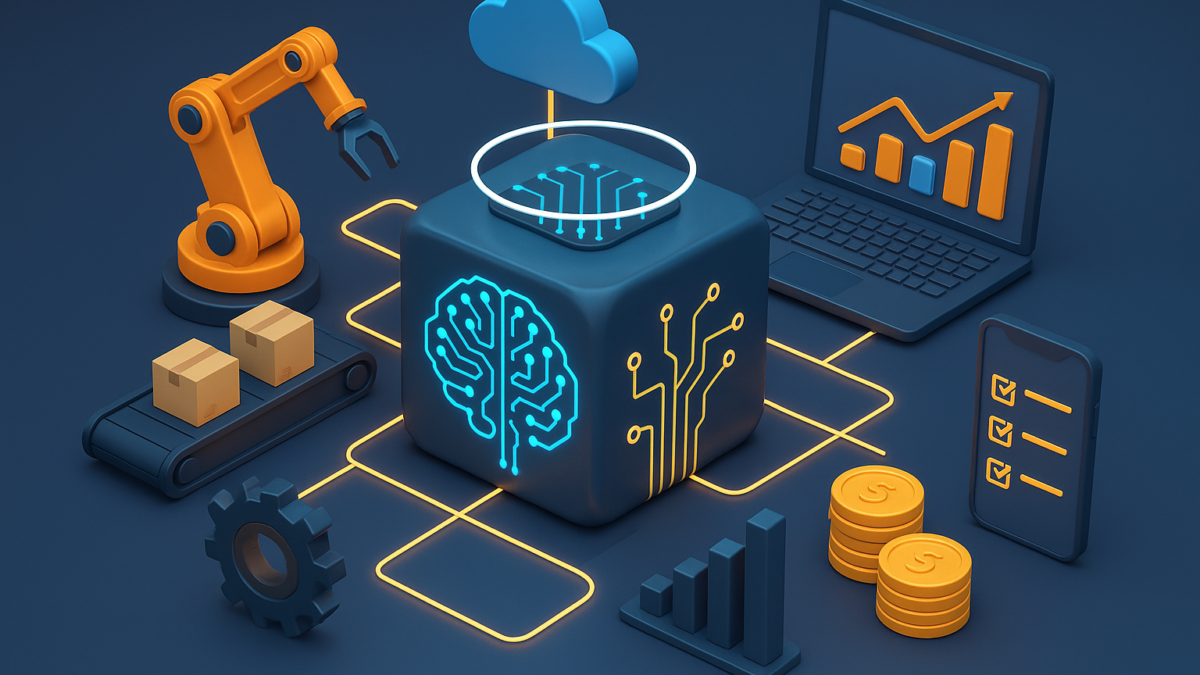AI Orchestration: The Hidden Force Behind Seamless Business Automation
Most conversations about artificial intelligence (AI) focus on individual tools—chatbots, predictive analytics, or generative AI. But in 2025, the real game-changer lies in AI orchestration: the ability to connect multiple AI systems, workflows, and platforms into a seamless business ecosystem.
Instead of siloed tools, AI orchestration ensures that every process—marketing, HR, finance, IT, or customer service—works together to create efficiency, accuracy, and scale. Think of it as the hidden conductor of the automation orchestra.
What Is AI Orchestration?
AI orchestration refers to the integration and coordination of multiple AI models, applications, and automation tools to achieve unified outcomes. Rather than relying on a single solution, businesses can:
- Automate end-to-end processes (not just parts of them).
- Bridge gaps between legacy systems and modern AI platforms.
- Eliminate repetitive workflows by allowing AI to handle decisions autonomously.
In short, AI orchestration is about creating intelligent workflows that can adapt in real time.
Why Businesses Need AI Orchestration in 2025
1. Breaking Down Siloed Automation
Many companies adopt AI in pockets—an HR chatbot here, a sales automation tool there. Without orchestration, these tools operate in silos. Orchestration ensures cross-departmental alignment for smoother operations.
2. Real-Time Decision Making
AI orchestration connects predictive analytics with real-time data flows, enabling businesses to respond instantly to market changes, customer behavior, or supply chain disruptions.
3. Cost Optimization
Instead of over-investing in multiple standalone platforms, orchestration lets companies maximize ROI by ensuring existing AI tools communicate effectively.
4. Scalability & Flexibility
As businesses grow, orchestrated AI systems can easily scale to manage more complex workflows without manual intervention.
Real-World Use Cases
- Customer Support: A chatbot escalates complex issues to an AI sentiment analyzer, which then routes cases to the right human agent.
- Finance: AI automates invoice scanning, fraud detection, and payment approvals in a single orchestrated flow.
- Marketing: Predictive AI identifies high-value leads, while generative AI personalizes outreach and automation platforms manage delivery timing.
- Healthcare: Orchestration allows patient data to flow between diagnostic AI, scheduling systems, and treatment planning tools.
Challenges of AI Orchestration
- Integration Complexity: Connecting legacy systems with AI tools isn’t always seamless.
- Data Governance: Orchestrating AI requires strict compliance with GDPR and other regulations.
- Bias & Accuracy: Orchestration amplifies results, which means any bias in one system could spread across the workflow.
- Skilled Talent Shortage: Few professionals today are trained specifically in AI orchestration.
Preparing for the Future
Businesses looking to embrace AI orchestration should:
- Audit existing automation tools to identify overlaps and gaps.
- Invest in middleware platforms that enable cross-platform orchestration.
- Prioritize data quality and compliance as the backbone of automation.
- Start small—pilot orchestrated workflows in one department before scaling across the enterprise.
Conclusion
AI orchestration is the hidden force transforming business automation in 2025. It doesn’t just enhance individual processes—it unites them into a seamless, intelligent, and adaptive ecosystem. For enterprises striving for efficiency, scalability, and innovation, AI orchestration isn’t optional—it’s the foundation of future-proof business operations.
🔑 Turn Insights into Opportunities with iTMunch
Struggling to reach the right decision-makers? iTMunch’s B2B Lead Generation Services help you connect with verified, high-intent prospects who matter most to your business. From targeted outreach to scalable campaigns, we ensure quality leads that drive real growth.
You May Also Like:Whitepapers in the Era of Generative AI: From Static Reports to Co-Created Content





